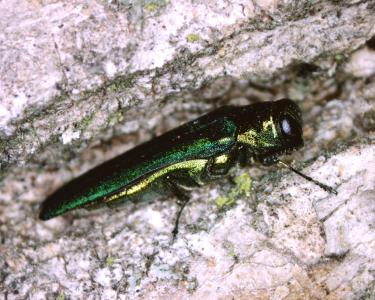Putting IPM into Practice
Every forest is different, as is every pest problem. When you need to battle unwanted guests, integrated pest management lets you choose the combination of pest control methods that’s right for your woods and your goals.
These methods fall under four categories: cultural, mechanical, biological and chemical.
Cultural pest prevention methods include selecting pest-tolerant trees, watering and fertilizing trees for optimal health, thinning your woods frequently and conducting prescribed burns. If you’re fighting an existing infestation, this may mean removing affected trees or susceptible tree species to stop the infestation from spreading.
Mechanical methods focus on physically removing pests, via traps (for insects and pest animals) or weeding (for invasive plants). You may also choose to install barriers around trees to keep pests away.
Biological strategies use natural predators to control pest populations. Birds, bats, ladybugs, certain beetles, predatory spiders and mites, and parasitic wasps are just some of your friends in the fight against pests. Boosting the beneficial bugs and insect-eating animals already living in your forest—or intentionally introducing them—will beef up your pest control efforts.
Chemical controls can include natural repellents and pheromones along with more traditional pesticides and herbicides.
Repellents and pheromones target insect and animal pests. Repellents, which are often derived from animal proteins, can make pests fearful, or create unpleasant tastes or sensations that drive them away. Pheromones—the chemicals pests use to communicate with each other—can be used to lure pests into traps or disrupt their mating behavior. Both natural repellents and pheromones are commercially available.
With pesticides and herbicides, caution is key. Find the most effective and targeted chemical for your specific pest, and follow all label directions carefully when applying it. Keep in mind that some of these chemicals require permits or licenses to purchase and use.
When using chemical controls, some days are better for spraying than others. Pesticides and herbicides are most effective when temperatures are above 60 degrees, and days with little or no wind are safest, because the chemicals won’t drift to other plants.
What if I need help choosing the best method for my woods?
Some of these methods may be things you’re already doing on your land, but some may be new to you. If you want more information or professional guidance on making IPM work for you, help is right around the corner.
Find out More
How can I get more tips?
It’s simple! Enter your email below.

